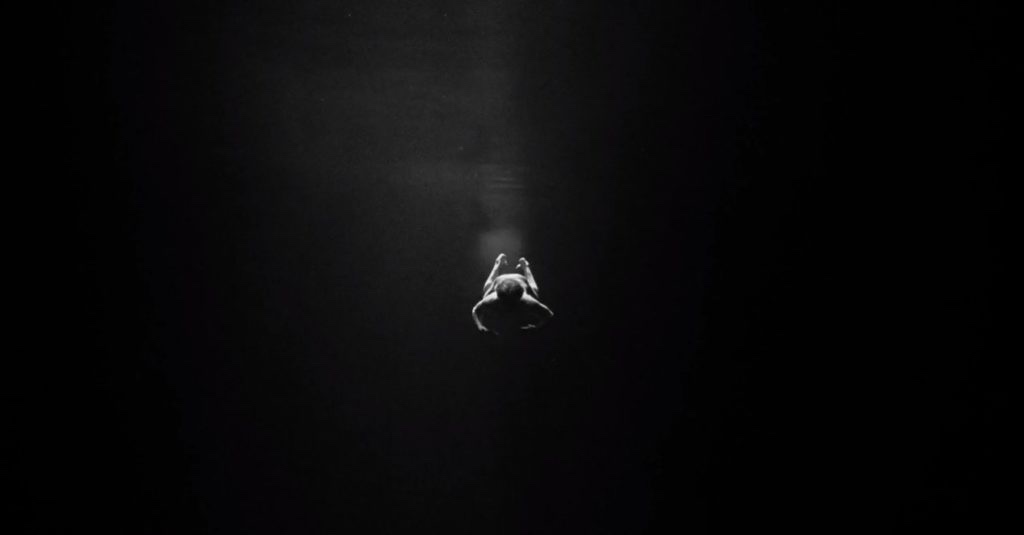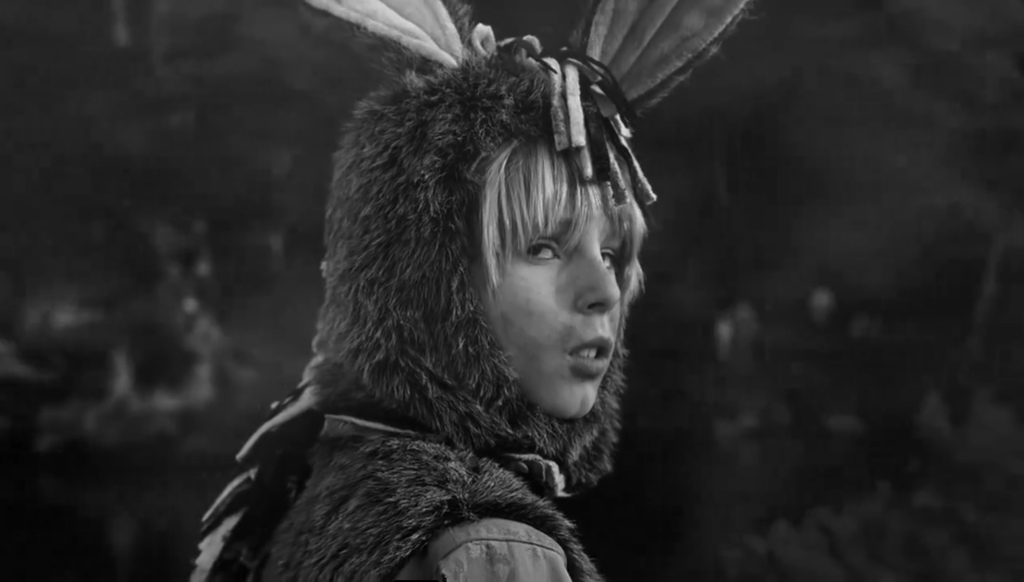Swimmer (Lynne Ramsay, 2012) is a 16 minute short film that follows a man who swims through rivers and lakes, listening to people along his way and finally trying to reconnect with society towards the end of the film.
The film is shot in black and white, which makes the bodies of water water look much deeper and wider, therefore more intimidating to the audience. It shows how the man, the swimmer, feels much more free in these places, as all of this space belongs to him. This is also communicated through close-ups that show how skilled he is at making his way through the water, and long shots that emphasise how deep the water is and how fearless they are of it. The film also inconsistently swaps perspective between him and people on land, which shows how others see him, and therefore how strange this scenario is to the audience, but also by swapping back to the swimmers perspective we can see more sense in his actions, as we see the skill with which he travels, and the stunning beauty of the water.
The film also relies heavily on the non-diegetic composed score, as there is little to no dialogue in it. The music is nationalistic, which doesn’t seem to be for patriotic or propagandistic reasons, but to add a powerful and grand quality to these scenes of a man swimming. They make this strange and bizarre situation more beautiful, as the musics power and grandiose adds a moving atmosphere to these scenes, accompanying the shots of rural scenery and the man swimming through it. It is very intense, and at the beginning adds a peaceful quality to the scene, making it feel more surreal and calming. Here it accompanies wide shots of the countryside to emphasise the beauty of what the man is doing. In the middle of the film, it is used to create more intense and distressing scenes for when the man is attacked by children or tries to walk on land. This accompanies extreme closeups of the man and the carnival rides, making the environment feel much more hostile and intimidating. At the end of the film, wide shots are accompanied by powerful and moving music, which makes the final scene feel more powerful and moving even if what is happening is not entirely clear. A monologue about a runner’s life being lonely is played over here to add more profound meaning to this artistic and visually stunning moment, and partially explains why the swimmer sinks below the surface at the end.
The film uses many close ups of the man swimming, and as the picture is very high quality, this brings to our attention the beauty of the environment and the man swimming in it. The film also uses some interesting techniques, such as reverse slow motion footage, first person perspectives that rise in and out of water, and extreme close of wide shots. These techniques lead to the film having a very dream-like and ethereal feel, as intensity rises suddenly in the middle before falling again in the last few minutes.
Some techniques that stick with me are the use of slow motion, sharp contrast between black and white, reliance on the non-diegetic composed score and use of close ups to impact the audience. These create a powerful, moving and visually striking short film that conveys meaning through music and actions, rather than dialogue or character. A good example of this is when the man leaves the water to see a carnival. Here extreme close ups of the rides accompanied with intense and industrial sounding music makes the audience uncomfortable in this hostile and uncalled environment, and the choice to not show any rides fully in frame makes them seem larger, more intimidating, like uncaring, industrial machines. The lack of colour also helps here, as in the water it creates a beautiful, calm and serene environment, but here illuminates the mist and bright lights, making this carnival seem like hell on Earth. This helps the audience understand the swimmers fear of this place, and therefore why he returns to the water. I may use black and white for sequences that take place in different time periods in my film, or the use of slow motion in shots where the main character is in deep thought. More likely though, the use of extreme close ups to show emotions of the characters or wide shots to bring the audiences attention to the environment. The use of powerful music to convey meaning where there is no dialogue is also an idea I will use.



You must be logged in to post a comment.